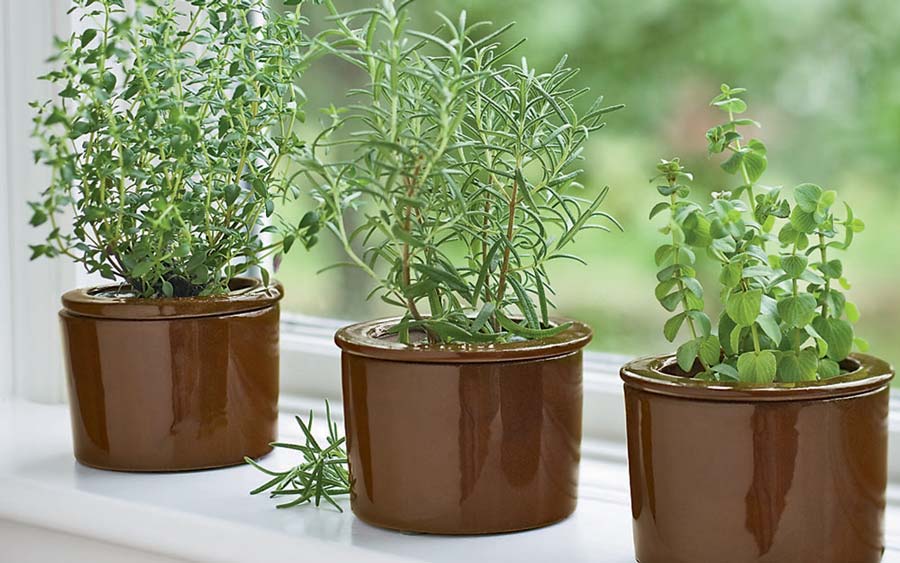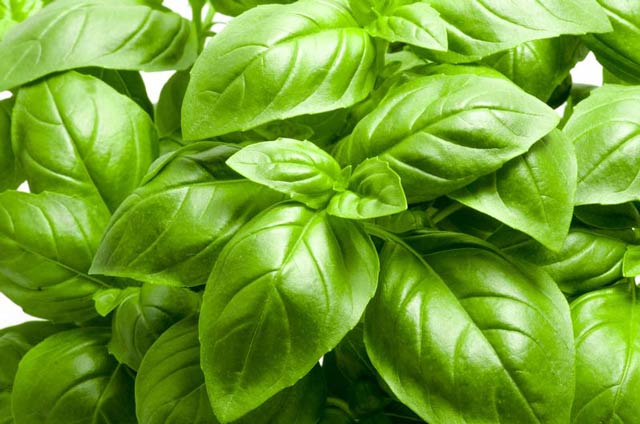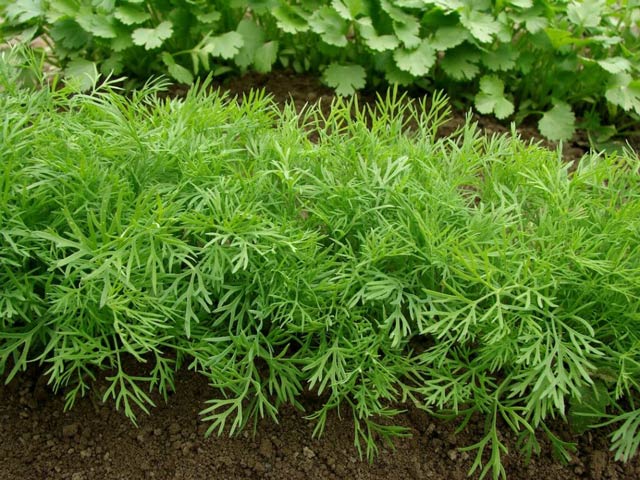How To Create A Kitchen Garden With Top 10 Healthy Herbs
Posted By: Shubi Husain On: August 17th, 2020

Gardening in itself is a hobby considered good for health and those who have interest, time and space for a kitchen garden then definitely this fun, money-saving leisure activity is good for your health. More so if you pick some healthy herbs to grow in there.
Herbs are the ingredients for our recipes that add to its taste, flavour and aroma. These flavouring components not only spice up our plate but bring on nutritional and health benefits too. They are great source of natural antioxidants and essential micronutrients. But reaping the maximum health benefits can be done when they are consumed as early as thirty minutes after plucking. Brian Hetrich, a naturopath and gardening expert says, “When you grow your own herbs you can use what you need at the moment by harvesting small amounts, fresh from the plant.”
Let us know about the Top 10 healthiest herbs that we can easily grow in our kitchen garden and extract as many health benefits as we can:
Basil:

Basil is one of the most popular kitchen herbs used around the world either dried or fresh. It has anise like flavour and clove like aroma. Basil provides good amount of vitamins like A, K and C and minerals like magnesium, iron, potassium and calcium. Basil is good source of fibre too. It provides antioxidants and act as anti-arthritic, anti-inflammatory and a good detoxifier. Basil is known to calm nerves. Its oil is also used to help in treating skin blemishes.
Growing basil in your garden: It can be grown either by sowing seeds indoor and then transferring the sapling out or from clippings directly. Plant is sensitive to frost so it should be kept in mind to protect a young plant from frost outside. Otherwise it doesn’t need much care and requires watering only alternate day. To get fresh basil leaves, be sure to remove the flower stalks from mature growth when they bloom.Soil should be moist and rich in nitrogen or incorporated with compost before sowing or transplanting the sapling. Morning sun exposure with afternoon shade in hotter climate is favourable. Germination usually happens in 5-10 days and within ten weeks the plant blooms for harvesting.
Dill:

This awesome flavourful herb is a great source of antioxidants, prevents diseases and promotes health. Dill has a pleasant anise like flavouring and both its sprigs and seeds are used as flavouring agent around the world. Dill is low in calories and full of fibres that helps further in lowering blood cholesterol. Fresh dill is a great source of vitamin C, A, riboflavin, niacin, and folic acid and minerals like zinc, copper, potassium, calcium, manganese, iron and magnesium. The essential oil in dill is a good anti-septic, anti-spasmodic, carminative, digestive, disinfectant, galactagogue (helping in milk production during lactation) and sedative. It’s a good remedy for hiccups. Treat your hiccups next time by adding a teaspoon of dill leaf in a cup of boiled water and drinking the strained liquid.
Growing dill in your kitchen garden : Dill can grow well in sun and requires watering once a week. If planted indoors, it requires a bit attention. Dill requires warm summer climate and well drained fertile soil for its growth.
Chives:

Belonging to the onion family, chive is a tasty herb that can boost our immunity, lower the risk of developing certain cancers, is a natural antibiotic, anti-inflammatory and aids in maintaining proper digestion. Due to its onion like flavour, chives are best used as flavouring agent for soups, fish and many vegetable dishes.
Growing chives in your kitchen garden : Chives grow easily and don’t require much light or space to thrive. Seeds can be sown indoors and then transferred outside during spring or fall or directly sown outside. Freshest chives can be obtained after a re-growth that is done by cutting completely across the base of the plant leaving just half inch stem above the soil. Chives require rich moist and well-drained soil to grow. It takes around two weeks to germinate.
Cilantro:

This revitalising herb is an important flavouring component in Mexican and Asian cuisines. Cilantro is rich in Vitamin C, iron and fibre. Cilantro helps in digestion, improving blood sugar, and relieving inflammation. Cilantro has a unique property to attach itself to heavy toxic metals like mercury, lead, and some others and draws them out of our tissues and bodies.
Growing cilantro in your kitchen garden: Cilantro needs deep well drained soil to thrive because of its deep taproot. It is difficult to grow indoors. It’s better to grow your cilantro outdoors during summer and spring season. Germination usually takes place in 7-10 days and you may harvest cilantro leaves as soon as available. Once flower buds appear, leaves become scarce. You may re-sow the seeds for yearlong supply. Keep an eye to keep your cilantro plant tidy to avoid fungal infection and away from parasites which munch on the tender stems.
Oregano:

It’s a common flavouring herb in Italian and Greek cuisines and is used for seasoning dishes of egg, meat, poultry and bread. Oregano leaves have medicinal properties and is beneficial in respiratory ailments, digestion problems, fungal infection of skin, and also muscle aches and joint pains. Both oregano leaves and flowers are edible and possess similar flavours.
Growing oregano in your kitchen garden: Oregano can be grown indoors by sowing seeds and then transferring it outdoors during spring. During winters, oregano needs protection and should be covered to avoid freezing of the roots. It thrives best in hotter climates with morning sun or full day sun with afternoon shades. Soil should be fertilized and well-drained. It requires around 14 days to germinate and the first harvest is ready by 12 weeks.
Parsley:

This is a common garnishing herb which is full of nutrients like Vitamin A, C and K. Vitamin A and C are required for healthy tissues, eyes and overall immunity and Vitamin K is essential for regulating blood coagulation and building strong bones. Parsley is a natural anti-biotic agent. It has powerful antioxidant and anti-inflammatory properties. It is helpful in neutralising bad breath, digestion and detoxification. Pregnant women should avoid parsley as it is supposed to cause uterine contraction leading to miscarriage.
Nutritional Significance Of Indian Food & It’s Impact On Health May Amaze You
Growing your own Parsley: This herb is easy to grow as it doesn’t require much maintenance or sun. Parsley grows from seed sown in rich moist soil indoors and then transferring it outdoors. Timely and careful trimming will result in heavier foliage. Part sun and part shade is most favourable. The growth is slower for parsley as it takes almost a month to germinate and around 11 weeks to give its first harvest.
Mint:

Mint is one of the oldest culinary herbs known to mankind. In Indian cuisine, mint is used in number of chutneys and dips, in refreshing summer drinks like aampanna or mojitos and even as a garnish. Mint is a calming and soothing herb that has been considered good for the breath, digestion, nausea, headaches, respiratory disorders, asthma, pimples and cavities. It’s a good source for Vitamin A and hence acts as powerful antioxidant. Mint is excellent to manage blood glucose level and treat skin problems. In summers particularly mint should be incorporated in our diet as it is a natural coolant.
Growing Mint in your kitchen garden: This herb grows fast and needs a lot of space. So planting it outdoors is the best option that too in a restricted space so that it doesn’t interfere with the growth of other plants in its periphery. It requires well moist and fertile soil so keep it hydrated. It can be grown using mint seedling or cutting of a mature plant. They can thrive both in sun and shade. Frequent harvesting can keep the mint plant blooming throughout the year.
Rosemary:

It is a pretty aromatic herb containing a compound “carnosic acid” that is supposed to fight cancer cells. Rosemary is helpful in digestion, treating bad breath, and relieving pain. Rosemary oil is used in the treatment of dandruff and other skin problems and promote hair growth. Aroma of rosemary is considered to relieve stress and anxiety and clear our minds and also sharpens our memory.
Growing rosemary in your garden:Rosemary grows best from cuttings of a mature plant than the seeds as it takes much time to germinate. It requires full sunshine and frequent watering. Soil has to be light, fertilised and well drained. The first harvest is usually within 11-14 weeks.
Sage:

Both dried and fresh sage is an excellent seasoning in sauces and various dressings. Even the flowers are edible and added to salads and desserts. Sage consists of antiseptic and antioxidant properties and fights early signs of ageing which makes it a common component of beauty and anti-ageing products. Sage is also considered helpful for reducing anxiety, fatigue and enhancing memory. Sage is used mainly as an infusion with tea to soothe mouth and throat infections, cure gastric ailments, calm anxiety, reduce fever and reverse greying of hair.
Growing sage at home: Sage can be grown from sowing seeds or from cuttings. It can be sown indoors and later shifted out or directly planted outside during spring season. It requires high maintenance and needs plenty of sunlight, good fertile soil and watering everyday to thrive. Timely trimming and removing the buds will result in better foliage. It usually takes 11-13 weeks to be prepared for first harvesting.
Thyme:

Thyme is a calorie free herb used to give a delicious boost to your soup, salad and numerous other recipes. It is a good source of vitamin A, hence beneficial for eye, skin, hair and nail health. Thyme is also a natural antiseptic, antibiotic and anti-inflammatory agent. Thyme infused tea can give you relief from cold, cough and sore throat. It’s a herbal remedy for bronchitis. Thyme oil is used for treatment of acne, eczema, dandruff, psoriasis, and prevents hair-fall.
Growing thyme in your garden:Thyme grows well indoors and doesn’t require much space. Just make sure of the access to sunshine and this small herb with plenty of flowers will add to the beauty of your little garden or home. Encourage growth by regularly plucking off the tip of the stem.
benefits of bananas Benefits of Garlic Bollywood celebrity Cholesterol Lowering Diet Complete food Diet for High BP Diet Myths diet tips Dietician eating before workout Eating garlic Essential Nutrients exercise Family Nutritionist Fitness Quotient Fitness Tips Foods Foods for dinner Foods for weightloss Fortified table salt Fourth getting in shape Health benefits of Spinach health foods Health Sanctuary Health Sanctuary Reviews HEALTH TRENDS healthy eating healthy eating during pregnancy Healthy Food Hollywood Hypertension Diet Plan Iodine deficiency Nutrition nutrition tips nutritionist olympics Portfolio Diet Positive Thinking Pregnancy diet tips pregnancy eating Shubi Husain Shubi Husain Diet Plan Slimming Spinach Tata salt weight loss Weight loss Review Weight Loss Testimonial World Health Day
-
Top 10 Tips To Overcome Fatigue And Remain Energetic Through The Day
Read more
-
Food That Will Help You Have Sharp and Good Memory
Read more
-
Diet Plan For Covid Patients & Those Recovering.. by Shubi Husain
Read more
-
Top 9 Foods To Boost Your Immunity Against Covid-19
Read more
-
How To Create A Kitchen Garden With Top 10 Healthy Herbs
Read more







